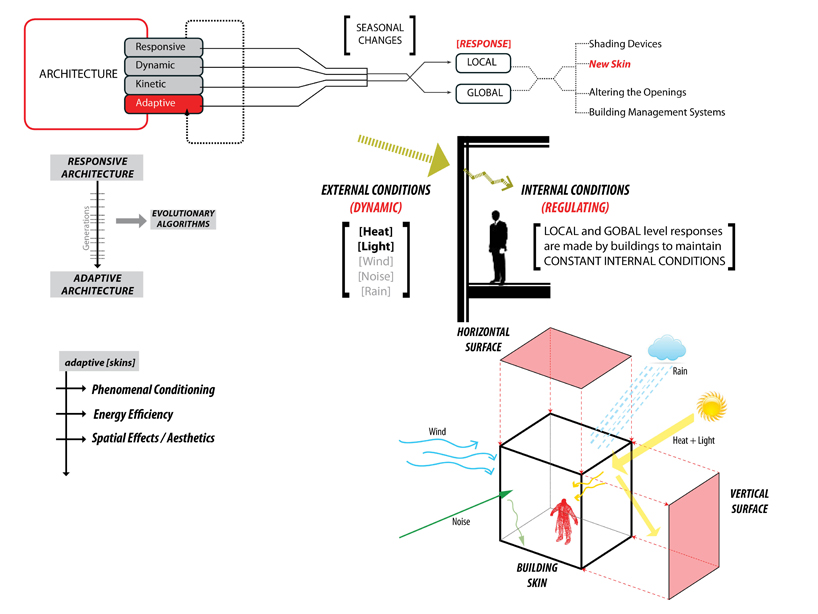
adaptive skins by Sushant Verma from uk
designer's own words:
Our lives are surrounded by constantly changing forces of nature and environment. Everything is in a constant state of flux, with varying degrees of dynamism. Our lives too, are always in motion. The spaces we inhabit are constantly changing as well, although the change is slow and occurs through non-physical conditions. The physical state of the inhabitable spaces are more or less constant and not in motion.
The project adaptive [skins] questions the static nature of architectural spaces, and engenders dynamism and motion in architecture in a complex and dynamic environment.
The line of research is responsive and dynamic architecture, where developments and advancements have been made in the past, dealing with dynamism and kinetics in architecture. However, a major setback in the current precedents lies in the use of mechanical control to create dynamism, which in most cases, is only for spatial effects and aesthetics. An attempt has been made in the research to deal with a bigger issue, for creating dynamism and response, for energy efficiency. Also, there is an attempt to embed material intelligence into the system, to rule over the use of mechanical control, partially or completely. The use of two parameters- heat and light, become a major breakthrough in the research, as the problem becomes complex and requires efficient use of computation for problem-solving. Smart materials (such as Shape Memory Alloys) are used to create dynamism in an efficient way leading to innovation as a system design for building skins.
The building skins developed are integration of tensegrity components and shape memory alloys which allow material intelligence to be embedded into the system reducing the use of mechanical components in the skin. The architectural skin developed for New Delhi is a roof system covering a 4500 sq. m. open market to adapt the ground conditions against the harsh sunlight, creating phenomenal conditioning within the market. A passive system using Nitinol Springs (Shape Memory Alloy) are used to actuate the tensegrity, with Nitinol being the Sensor as well, making a completely non-mechanical system. The South-East Façade of Museum of Contemporary Arts in Barcelona is used as a testing site for the active system which controls the dynamism of the skin in a much more precise manner using environmental sensors and pneumatic actuators to regulate the internal conditions of the museum throughout the year.
Responsive Architecture – INTRODUCTION 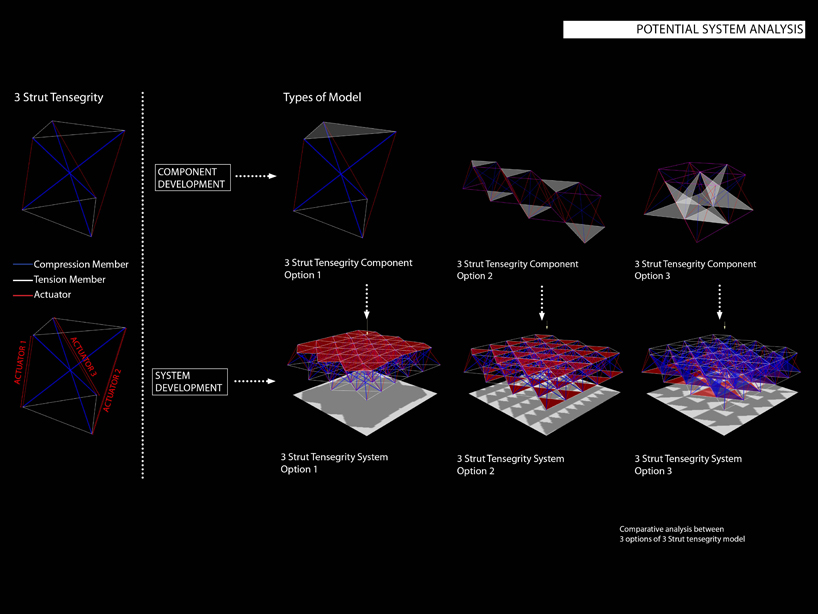 Potential System Analysis [jwplayer config=”mplayer” width=”818px” height=”600px” file=”https://static.designboom.com/wp-content/compsub/366915/2012-12-31/video_1_1356990278_ff3c7ff1eef386d6c6f362122174a234.flv”] video
Potential System Analysis [jwplayer config=”mplayer” width=”818px” height=”600px” file=”https://static.designboom.com/wp-content/compsub/366915/2012-12-31/video_1_1356990278_ff3c7ff1eef386d6c6f362122174a234.flv”] video
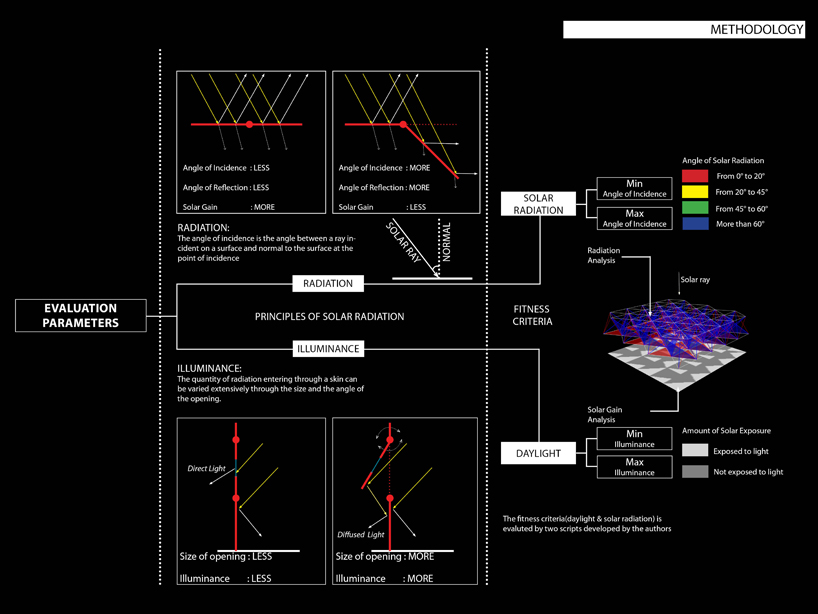 Methodology
Methodology 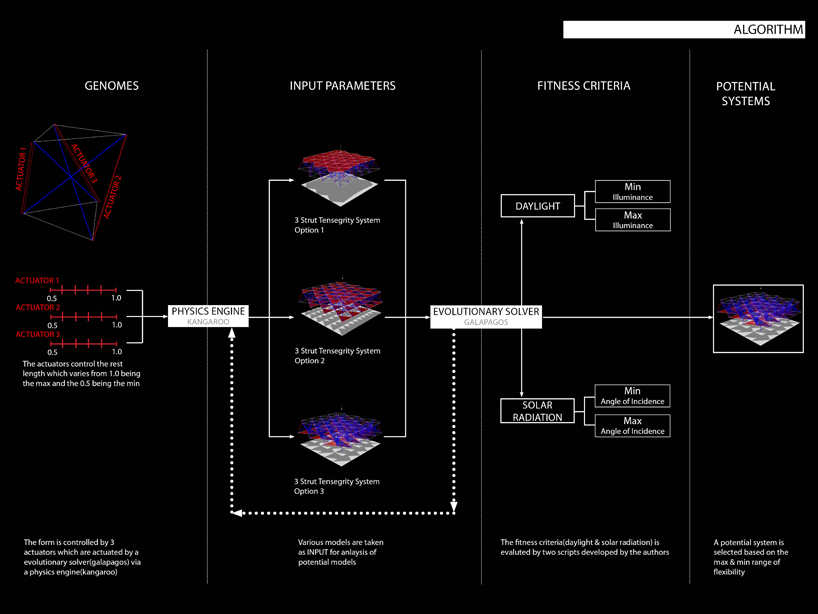 Algorithm Development
Algorithm Development 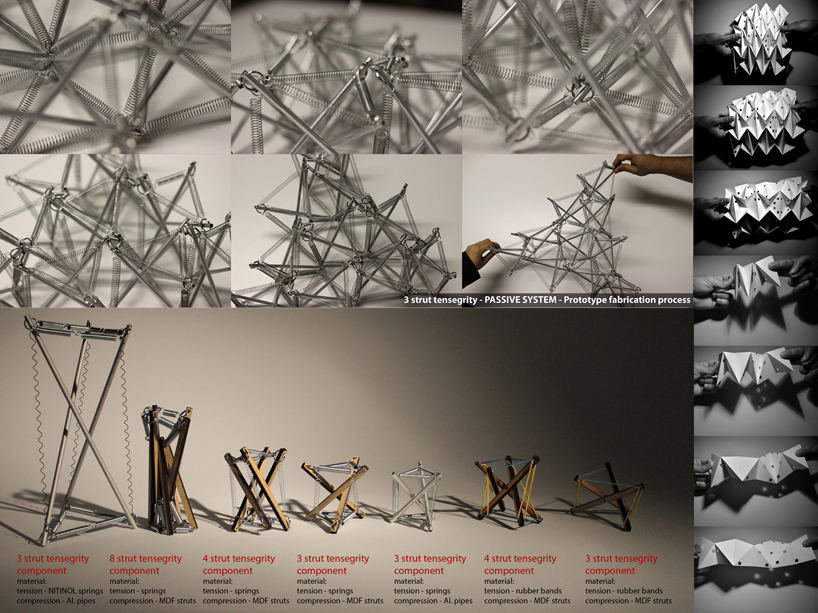 Prototype Fabrication [jwplayer config=”mplayer” width=”818px” height=”600px” file=”https://static.designboom.com/wp-content/compsub/366915/2012-12-31/video_2_1356990278_9b5900900e090884cae91645023d58d9.flv”] video
Prototype Fabrication [jwplayer config=”mplayer” width=”818px” height=”600px” file=”https://static.designboom.com/wp-content/compsub/366915/2012-12-31/video_2_1356990278_9b5900900e090884cae91645023d58d9.flv”] video
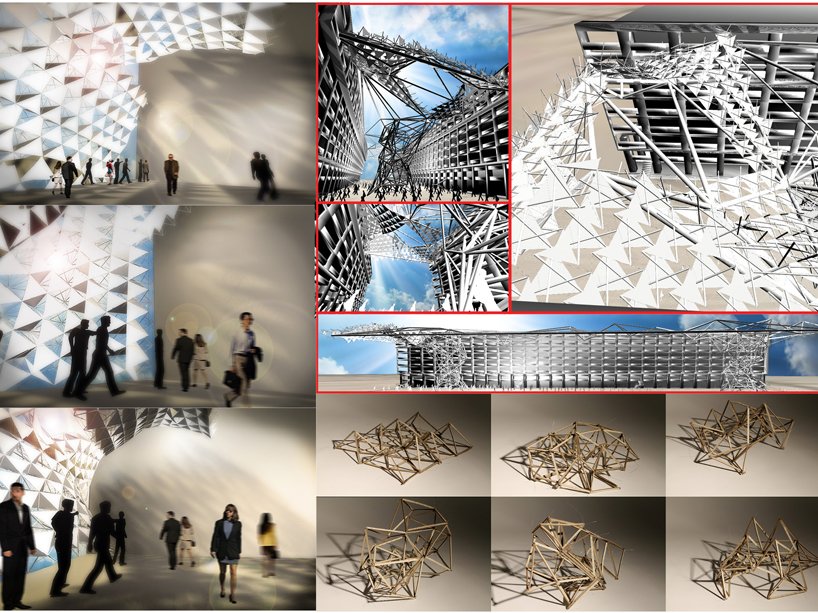 Architectural Vision
Architectural Vision